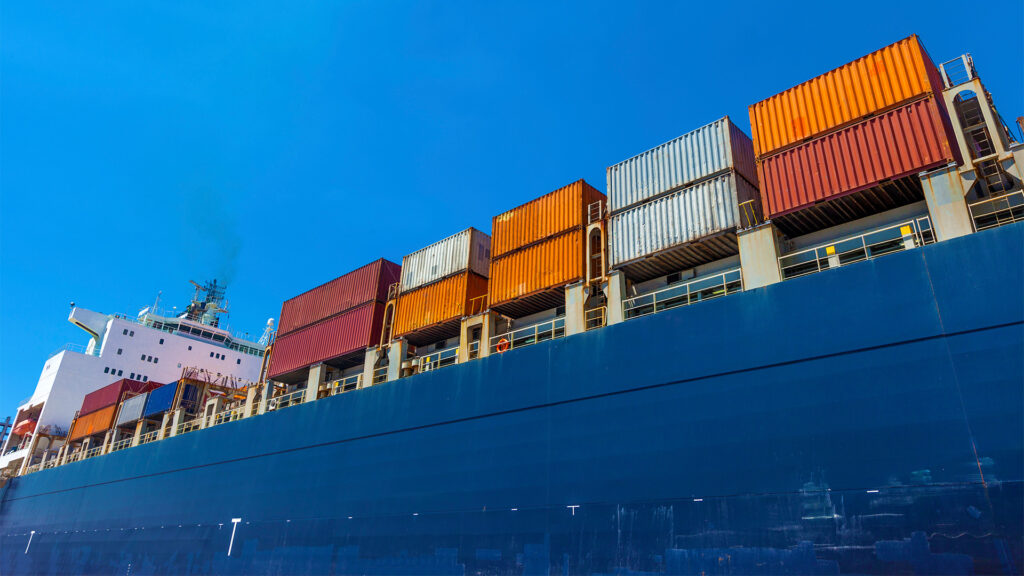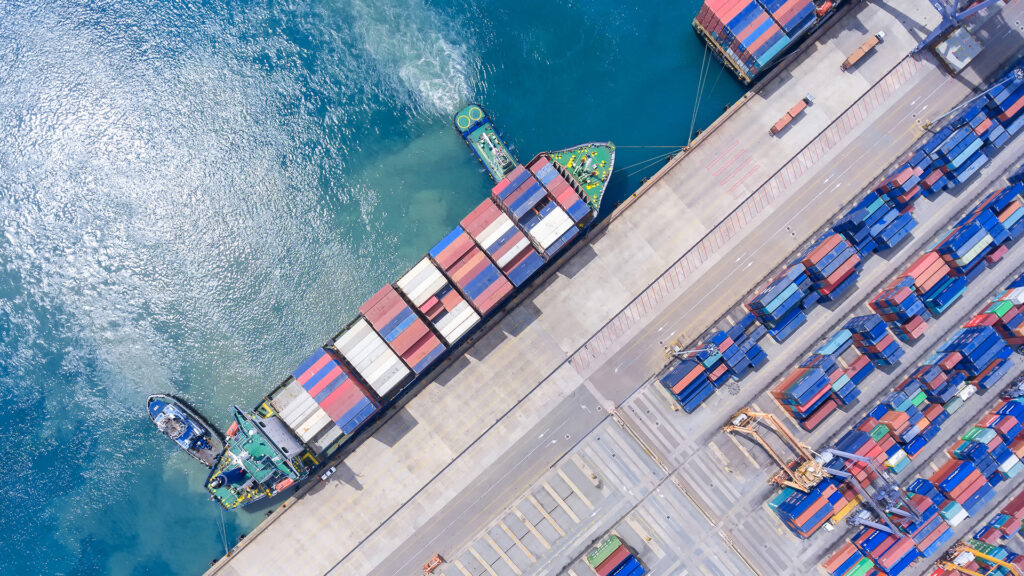
ATLANTIK CONFIDENCE: Cargo Insurers “break limits” in unprecedented judgment, October 2016
Following the fire and sinking of the bulk carrier ATLANTIK CONFIDENCE off the coast of Oman in April 2013, the owners of the vessel sought to constitute a limitation fund pursuant to the Convention on Limitation of Liability for Maritime Claims 1976 (as amended, the Convention) in the Admiralty Court and obtain a declaration that they were entitled to limit their liability in accordance with the Convention due to the size of potential claims advanced against the owners.
Cargo Insurers sought to “break limits” by defending the application on the basis that the loss of the vessel along with her cargo was caused by the “personal act or omission” of the owners. Therefore the exception in Article 4 of the Convention applied. Cargo Insurers argued that the only credible explanation for the sinking of the vessel which was consistent with all of the evidence was that she was deliberately sunk by her crew on the direction of her owners. They argued that the “innocent” explanation for the vessel sinking put forward by the owners required a series of improbable fortuities which when viewed in the context of the other evidence such as the change of routing of the vessel into deeper water, the Master and Chief Engineer’s behaviour and response to the fire and the difficult financial circumstances of the owners’ principal meant that the only credible conclusion could be that the loss was caused by a deliberate act.
Legal test
Article 4 of the Convention provides as follows:
“A person liable shall not be entitled to limit his liability if it is proved that the loss resulted from his personal act or omission, committed with the intent to cause such loss, or recklessly and with knowledge that such loss would probably result.”
This provision is the only basis upon which the limits afforded by the Convention will not apply.
Burden of proof
It was common ground in the case that Cargo Insurers had to prove its case on the balance of probabilities and that in determining whether Cargo Insurers had discharged that burden the Court’s approach should be the same as where a shipowner makes a claim on the hull policy and the insurer alleges the ship was scuttled.
In this regard Mr Justice Teare cited with approval the decision in Brownsville Holdings Ltd v Adamjee Insurance Co. (The Milasan) [2000] 2 Lloyd’s Reports 458 where Mr Justice Aikens made clear that scuttling is a serious charge and the standard of proof will not fall far short of the criminal standard and that by the nature of these cases it will not normally be possible for insurers to obtain any direct evidence so the Court can consider all relevant indirect and circumstantial evidence. Further that the insurers do not have to prove a motive if the facts are unambiguous. The Judge also had in mind the possibility that where the evidence is limited then it may simply not be possible to reach a finding on the cause of the loss citing the POPI M [1985] 2 Lloyds Law Reports 1.
In conclusion on the burden of proof issue Mr Justice Teare said:
“The court will only be able to draw such inference when the case is established on the balance of probabilities. Shipowners do not generally resort to scuttling and an allegation that a shipowner has done so is a grave charge to make………………. In Strive Shipping v Hellenic Mutual War Risks Association (the GRECIA EXPRESS) [2002] 2 Lloyd’s Rep. 88 at pp. 97-99 Colman J. concluded that it must be “highly improbable” that the vessel was lost accidentally and that there must be derived from the whole of the evidence “a high level of confidence that the allegation is true.” As Aikens J. said in The Milasan, the facts proved against the owner must be “sufficiently unambiguous” to establish that the owner was complicit in the casting away of his vessel.”
Factual background
During February and March 2013 the ATLANTIK CONFIDENCE (vessel) loaded various project cargos in Oktyabrsk, Ukraine, Odessa, Ukraine and Gemlik, Turkey for discharge in various ports in Oman, UAE, Saudi Arabia and Pakistan. On completion of loading she progressed via the Suez Canal to the Gulf of Aden.
Shortly before dawn on 30 March 2013, a fire broke out in the engine room of the vessel on the starboard side of the second deck by the generators and the store room. At the time the vessel was 138NM off Masirah Island. Less than three hours later the Master had taken the decision to abandon the vessel. For four hours the crew remained in lifeboats in the vicinity of the vessel during which time the Master and Chief Engineer returned to the vessel twice. They were then picked up by a passing vessel and eventually repatriated to Turkey. By this time it was clear that the fire had been out for some time.
The weather was relatively calm and the vessel remained in the vicinity for some time. She adopted a port list and a stern trim which gradually increased until the early hours of 3 April 2016 when she finally sank.
Following the sinking, the owners of the vessel sought to establish a limitation fund in accordance with the Convention (see previous update1). Thereafter they applied for a declaration that the owners were entitled to limit their liability. The Cargo Insurers objected to this application. They contended that the vessel had been deliberately scuttled by the crew on the instruction of the owners.
Owners’ case
The owners argued that the vessel’s loss was accidental. Their case was that the fire was accidental and caused water ingress to the engine room and ballast tanks. Their case was predicated on there having been an accidental fuel oil leak on no.2 generator which sprayed from the generator to the generator flat to the store room and then changed direction back to port to ignite on a hot turbo charger casing which would need to have been unlagged. The judge held that the “aggregation of such unlikelihoods, coupled with the lack of support for a fire on the no.2 generator from the observations of the engineers, suggests that the possibility that the cause of the fire in the store room was a fire at the no.2 generator caused by an oil leak is no more than a remote possibility.”
This fire was then said to have developed substantially in the store room to such an extent that it caused a crack in the shell platting of the vessel below the water line in or around the vicinity of the store room which allowed water ingress to the store room. At the same time the fire caused the “hot-wiring” of the vessel’s ballast system in such a way that it operated automatically to open certain ballast valves, but not others. For the hot wiring theory to be correct, the judge said “a number of conditions had to be satisfied and a number of events had to occur.”
Lastly, flooding the engine room and the ballast tanks would not sink the vessel. It was agreed between the experts that it was necessary for another compartment to be flooded. As a result the owners argued that there had been unrelated corrosion or damage to the sounding pipe and/or ballast pipe between the top and bottom side tanks in Hold no. 5.
Cargo Insurer’s case
Cargo Insurers argued that the Master and the Chief Engineer, on the instruction of the principal deliberately opened the sea chests in the engine room and the valves to the ballast system to allow an ingress of water to the vessel. On Cargo Insurer’s case, the fire was deliberately started in the store room by the Chief Engineer or Master to hide the deliberate ingress of water. Cargo Insurers case was that owners’ sequence of events was wholly implausible and could not be the reason why the vessel sank.
Cargo Insurers also sought to rely on other evidence which they said pointed to a scuttling. These were described by the judge as “matters of cumulative suspicion” which “individually, might not justify a finding of a deliberate loss but, when looked at collectively, suggest a deliberate loss”.
1. The change of course
A few days before the fire, the vessel changed her course to take her further away from the Coast of Oman and into the Indian Ocean. This took her further from assistance and into much deeper water. The owners were unable to give any credible reason for this change of course despite trying to argue that the change of route arose as a result of the risk of piracy.
2. The HEATHER
The owners directed another vessel in their fleet, the HEATHER to attend the vessel once the crew had abandoned. The HEATHER was diverted from her duties to collect two super-intendents from the owners’ office in Turkey who would rendezvous with her in Oman before steaming to the vessel. Crucially the HEATHER called in Muscat at the same time the appointed salvors were mobilising yet did not assist them in any way or even make them aware of their presence. The HEATHER arrived significantly before the salvors. Whilst their evidence was that the super-intendents wanted to get on board “neither was able, when cross-examined, to identify what precisely they intended to do”.
3. The conduct of the Master and Chief Engineer
The response of the Master and Chief Engineer in the aftermath of the fire was suspicious. The Chief Engineer prevented other crew members from entering the engine room to fight the fire. There was no investigation into the cause of the list. No distress message was sent until nearly two hours after the fire had broken out, just before the vessel was abandoned. The Master did not inform the office of the decision to abandon ship. The Master and the Chief Engineer returned to the vessel twice, and at no time was the working chart retained. No written report of the casualty was ever produced by the Master.
4. The financial circumstances of the principal
The vessel was part of a wider fleet of vessels all of which were significantly over-insured including the vessel. It was demonstrated that all of the companies in the group structure were balance sheet insolvent and had no prospect of trading their way out of their debt.
They were in “real financial difficulty” and it was likely that the principal “was under pressure from his bank”. The sinking of the vessel meant that the borrowings to the mortgagee bank not only in relation to the vessel but to four other vessels in the fleet were substantially reduced.
Judgment
In a very detailed and considered judgment which followed extensive expert evidence and argument on both sides during a six week hearing, Teare J agreed with Cargo Insurers and concluded that the sinking was a deliberate scuttling:
“Having considered the totality of the evidence in this case and the opposing arguments I have concluded that the chief engineer, with the knowledge and agreement of the master, deliberately set a fire in the store room and deliberately caused ATLANTIK CONFIDENCE to sink. They denied that they did so but I cannot accept their evidence. When their evidence is placed in the context of the case as a whole it cannot be true.”
Moreover he found that it was undertaken at the instruction of the principal:
“The vessel was deliberately sunk by the master and chief engineer at the request of Mr. Agaoglu, the alter ego of the Owners. In those circumstances the loss of the cargo resulted from his personal act committed with the intent to cause such loss. The loss of the cargo was the natural consequence of his act as he must have appreciated. There can be no doubt that he intended the cargo to be lost just as much as he intended the vessel to be lost. It follows that the Owners’ claim for a limitation decree must be dismissed.”
The judge considered that “whilst the improbable can happen it is difficult to accept that three improbable events (an accidental fire, an accidental flooding of the engine room caused by the fire and an accidental flooding of two double bottom tanks on the portside caused by the fire) may have occurred in rapid succession to each other.”
As a result the owners’ application for a limitation decree was refused. It is not yet known whether any of the parties will seek to appeal.
Commentary
This was an exceptionally technical and detailed dispute with many strands of expert and factual evidence for the judge to consider. As far as we are aware, this is the only time in the UK limits have successfully been broken under the Convention in 40 years. In our view this is a decision which turns on its own unique facts. Therefore we do not see that this decision changes the interpretation or application of Article 4 or in any way lowers the threshold for breaking limits. It should not open the floodgates to parties seeking to break limits as the facts of this case as found by the Court are thankfully, highly unusual. We suggest that all this case demonstrates is that in the correct factual scenario the Admiralty Court will be willing to take a decision to “break limits”. We do not consider the judgment breaks any new ground in relation to the legal test or burden of proof.
The HFW team was led by Partner James Gosling (recently retired and now a consultant with the firm) and included Senior Associates Alex Kemp and Jenny Salmon and latterly Rory Butler (Partner).
Counsel were Nigel Jacobs QC and Ruth Hosking both of Quadrant Chambers.
For more information, please contact Rory Butler, Partner, London, on +44 (0)20 7264 8310, or rory.butler@hfw.com, or Alex Kemp, Senior Associate, London, on +44 (0)20 7264 8432, or alex.kemp@hfw.com, or Jenny Salmon, Senior Associate, London, on +44 (0)20 7264 8401, or jenny.salmon@hfw.com, or your usual contact at HFW.
Footnote
Download a PDF version of ‘ATLANTIK CONFIDENCE: Cargo Insurers “break limits” in unprecedented judgment, October 2016’













